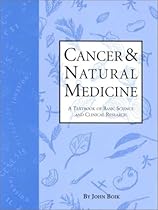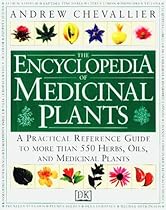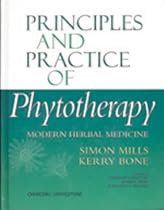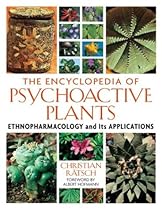| GSL
WORMWOOD, SWEET Sweet Annie Artemisia annua. traditional chinese medicine, Qinghaosu, for malaria.
WOUNDS. A wound is a disruption of tissues in any part of the body due to injury. A contusion is bruising of soft tissues beneath the skin, with pain and swelling. A haematoma is where a local extravasation of blood occurs. A laceration is a ragged torn wound. From severe wounds there is always the possibility of collapse from shock. Internal treatment assists recovery. Alternatives. Internal. |
John Boik
See book keywords and concepts |
 Toxins
The word toxin (du) has a variety of meanings in traditional chinese medicine, including poison, venom, fevers, and other symptoms associated with infectious disease. With respect to cancer, its most important meaning is that of purulent tissue decay. Toxins
The word toxin (du) has a variety of meanings in traditional chinese medicine, including poison, venom, fevers, and other symptoms associated with infectious disease. With respect to cancer, its most important meaning is that of purulent tissue decay. |
| Eastern Psychology
Eastern medical traditions such as traditional chinese medicine and Ayurvedic medicine have long held that the mind directly affect the body and that therapy for any mental or emotional imbalance improves the treatment outcome for many physical diseases. TCM views emotional imbalance as a common cause of disease, and views various diseases as affecting the mind and emotions. China is now a world leader in integrating meditation exercises into modern clinical settings. Meditation is one of the primary tools used in Eastern traditions to correct imbalances of the mind. |
Ralph W. Moss, Ph.D.
See book keywords and concepts |
 In China, for instance, the term 'xing ren' (generally translated as almond) actually refers to apricot kernels, which are a staple of traditional chinese medicine. Since at least the Han dynasty (206 BC to 220 AD), apricot kernels have been used medically in China. They are currently an official drug in the pharmacopeia of the People's Republic of China. Kernels are used for coughs, excess phlegm, asthma and constipation. The daily internal dose ranges from 0.2 to 0.3 oz. In China, for instance, the term 'xing ren' (generally translated as almond) actually refers to apricot kernels, which are a staple of traditional chinese medicine. Since at least the Han dynasty (206 BC to 220 AD), apricot kernels have been used medically in China. They are currently an official drug in the pharmacopeia of the People's Republic of China. Kernels are used for coughs, excess phlegm, asthma and constipation. The daily internal dose ranges from 0.2 to 0.3 oz. |
John Boik
See book keywords and concepts |
 SUMMARY
The foundation for diagnosis in traditional chinese medicine is the eight principles. These are yin and yang, hot and cold, replete and vacuous, and internal and external. The eight principles, along with the concepts of qi, blood, phlegm, toxins, and the twelve channels and twelve organs constitute the core of TCM theory. In TCM, diseases are viewed in terms of symptom patterns, which relate a constellation of symptoms with the terms and concepts of TCM theory. A select number of symptom patterns may be common in patients with cancer. SUMMARY
The foundation for diagnosis in traditional chinese medicine is the eight principles. These are yin and yang, hot and cold, replete and vacuous, and internal and external. The eight principles, along with the concepts of qi, blood, phlegm, toxins, and the twelve channels and twelve organs constitute the core of TCM theory. In TCM, diseases are viewed in terms of symptom patterns, which relate a constellation of symptoms with the terms and concepts of TCM theory. A select number of symptom patterns may be common in patients with cancer. |
| The term traditional chinese medicine (TCM) actually refers to a rather recent evolutionary stage. The Communist Chinese government made a decision in the 1940s to promote China's native medicine rather than replace it entirely with Western conventional medicine. Before this time, the knowledge to practice Chinese medicine passed from generation to generation informally by family lineage, rather than through formal instruction at universities. Each lineage stressed different aspects, causing differences to exist between lineages. |
| To some degree, parts of this approach have been used in traditional chinese medicine, where one of the traditional herbal strategies for treating cancer is "invigo-ration" of the blood circulation using fibrinolytic and other agents. However, the effects of this traditional strategy on angiogenesis has not been determined. Obviously, the degree to which fibrinolysis can be stimulated may be limited. Patients with cancer often are recovering from surgeries or have tumors that bleed. Excessive fibrinolysis in these patients could be catastrophic. |
Andrew Chevallier
See book keywords and concepts |
 Chinese medicine for "liver fire" patterns, and for constipation and atherosclerosis.
Key Constituents
¦ Anthraquinone glycosides .(sennosides)
Parts Used
Leaves are stronger in action than the pods and are not as commonly used.
Pods are milder in effect than the leaves. Tltey are made into tablets and other preparations.
Dried pods
& Key Preparations & Their Uses
Cautions Do not give to children under 12. Do not take for more than 10 days at a time. Do not take if suffering from colitis. Do not take during pregnancy.
Tablets are the standard senna preparation and are convenient. Chinese medicine for "liver fire" patterns, and for constipation and atherosclerosis.
Key Constituents
¦ Anthraquinone glycosides .(sennosides)
Parts Used
Leaves are stronger in action than the pods and are not as commonly used.
Pods are milder in effect than the leaves. Tltey are made into tablets and other preparations.
Dried pods
& Key Preparations & Their Uses
Cautions Do not give to children under 12. Do not take for more than 10 days at a time. Do not take if suffering from colitis. Do not take during pregnancy.
Tablets are the standard senna preparation and are convenient. |
Schuyler W. Lininger, Jr. DC
See book keywords and concepts |
 Chinese medicine.
How Much Is Usually Taken?
Powdered, encapsulated berries can be used in the amount of 5 to 15 grams per day.4 A similar amount of berries can be made into tea by adding Vi to 1 U.S. teaspoons (2 to 5 grams) of powdered or crushed berries to 1 cup (250 ml) of boiling water and steeping for 10 to 15 minutes. Alternatively, 3 to 5 ml of tincture 3 times per day can be taken.
Are There Any Side Effects or Interactions? No adverse effects have been reported. Chinese medicine.
How Much Is Usually Taken?
Powdered, encapsulated berries can be used in the amount of 5 to 15 grams per day.4 A similar amount of berries can be made into tea by adding Vi to 1 U.S. teaspoons (2 to 5 grams) of powdered or crushed berries to 1 cup (250 ml) of boiling water and steeping for 10 to 15 minutes. Alternatively, 3 to 5 ml of tincture 3 times per day can be taken.
Are There Any Side Effects or Interactions? No adverse effects have been reported. |
Larry Trivieri, Jr.
See book keywords and concepts |
 Chinese medicine, and Ayurvedic medicine.
Diet
Diet is especially important when treating sleep disorders, and it is essential to rule out food intolerances as a cause. In one study of infants, sleeplessness was eliminated by removing cow's milk from the diet and then reproduced by its reintroduction.18 Leon Chaitow, N.D, DO., of London, England, and other alternative practitioners recommend a combination of nutritional adjustments to aid sleep, including:
• A marked reduction in alcohol consumption.
• Avoid caffeine in all forms (tea, coffee, cola, chocolate). Chinese medicine, and Ayurvedic medicine.
Diet
Diet is especially important when treating sleep disorders, and it is essential to rule out food intolerances as a cause. In one study of infants, sleeplessness was eliminated by removing cow's milk from the diet and then reproduced by its reintroduction.18 Leon Chaitow, N.D, DO., of London, England, and other alternative practitioners recommend a combination of nutritional adjustments to aid sleep, including:
• A marked reduction in alcohol consumption.
• Avoid caffeine in all forms (tea, coffee, cola, chocolate). |
Schuyler W. Lininger, Jr. DC
See book keywords and concepts |
 Chinese medicine and is commonly used for older individuals showing signs of memory loss. Asian ginseng improves and sharpens mental concentration and performance, including attention and memory.34 35 While not as thoroughly researched as GBE for this condition, studies show that ginseng is effective at improving memory and also countering depression in the elderly. Some herbal supplements combine GBE with Asian ginseng. Are There Any Side Effects or Interactions? Refer to the individual herb for information about any side effects or interactions. Chinese medicine and is commonly used for older individuals showing signs of memory loss. Asian ginseng improves and sharpens mental concentration and performance, including attention and memory.34 35 While not as thoroughly researched as GBE for this condition, studies show that ginseng is effective at improving memory and also countering depression in the elderly. Some herbal supplements combine GBE with Asian ginseng. Are There Any Side Effects or Interactions? Refer to the individual herb for information about any side effects or interactions. |
Daniel B. Mowrey, Ph.D.
See book keywords and concepts |
 Chinese medicine." American Journal of Chinese Medicine, 10(1-4), 32-39, 1982.
5. Turkevich, O.M., et. A., "Using eleutherococcus to treat patients with senile and arteriosclerotic psychoses." 24th Session of the Committee to Study Ginseng and Other Medicinal Plants of the Far East. VBaldivostok, 96 pages.
6. Kirilov, O.I. "The effect of fluid extract of eleutherococcus root on the pituitary-adrenocortical system." Sib. Otd. Acad. Nauk S.S.S.R., 23, 3-5, 1964.
7. Golotin, G.F. & Bojko, S. N., "Research on the increased resistance of organisms treated with eleutherococcus and other medicines. Chinese medicine." American Journal of Chinese Medicine, 10(1-4), 32-39, 1982.
5. Turkevich, O.M., et. A., "Using eleutherococcus to treat patients with senile and arteriosclerotic psychoses." 24th Session of the Committee to Study Ginseng and Other Medicinal Plants of the Far East. VBaldivostok, 96 pages.
6. Kirilov, O.I. "The effect of fluid extract of eleutherococcus root on the pituitary-adrenocortical system." Sib. Otd. Acad. Nauk S.S.S.R., 23, 3-5, 1964.
7. Golotin, G.F. & Bojko, S. N., "Research on the increased resistance of organisms treated with eleutherococcus and other medicines. |
Larry Trivieri, Jr.
See book keywords and concepts |
 Chinese medicine (TCM) and Ayurvedic medicine (from India) recognized that human beings were comprised of body, mind, and spirit, and that health represented a harmonious balance within all three of these aspects of existence, as well as the free flow of invisible vital energy (known in China as qi and in India as prana) throughout the various body systems. Chinese medicine (TCM) and Ayurvedic medicine (from India) recognized that human beings were comprised of body, mind, and spirit, and that health represented a harmonious balance within all three of these aspects of existence, as well as the free flow of invisible vital energy (known in China as qi and in India as prana) throughout the various body systems. |
Andrew Chevallier
See book keywords and concepts |
 Chinese medicine and is taken for appetite loss and wheezing.
Key Constituents
¦ Steroidal saponins (mainly dioscin)
¦ Phytosterols (beta-sitosterol)
¦ Alkaloids
¦ Tannins
¦ Starch
Wild Yam a deciduous perennial vine, climbing to 20 ft (6 m) with heart-shaped leaves and tiny green flowers.
Parts Used
Root and tuber have valuable antispasmodic properties. They are used to treat colic and menstrual cramps.
< rr-Z n z > r-
— r > z c/5
Fresh root and tuber x 4. > '
Chopped dried root and tuber
Dried root and tuber
& Key Preparations & Their Uses
Caution Do not take during pregnancy. Chinese medicine and is taken for appetite loss and wheezing.
Key Constituents
¦ Steroidal saponins (mainly dioscin)
¦ Phytosterols (beta-sitosterol)
¦ Alkaloids
¦ Tannins
¦ Starch
Wild Yam a deciduous perennial vine, climbing to 20 ft (6 m) with heart-shaped leaves and tiny green flowers.
Parts Used
Root and tuber have valuable antispasmodic properties. They are used to treat colic and menstrual cramps.
< rr-Z n z > r-
— r > z c/5
Fresh root and tuber x 4. > '
Chopped dried root and tuber
Dried root and tuber
& Key Preparations & Their Uses
Caution Do not take during pregnancy. |
Larry Trivieri, Jr.
See book keywords and concepts |
 Chinese medicine.
In addition, juice therapy offers a balanced way to supplement the diet, according to Steven Bailey, N.D., of the Northwest Naturopathic Clinic, in Portland, Oregon. "One of the most convenient therapies available is the use of raw fruit and vegetable juices to augment the typical diet. Juice therapy can also aid in a treatment program by stimulating the immune system, reducing blood pressure, aiding in detoxification, and protecting the body from harmful environmental factors. Chinese medicine.
In addition, juice therapy offers a balanced way to supplement the diet, according to Steven Bailey, N.D., of the Northwest Naturopathic Clinic, in Portland, Oregon. "One of the most convenient therapies available is the use of raw fruit and vegetable juices to augment the typical diet. Juice therapy can also aid in a treatment program by stimulating the immune system, reducing blood pressure, aiding in detoxification, and protecting the body from harmful environmental factors. |
| Chinese medicine, cites numerous scientific studies documenting the effects of Qigong. In one study, 2,873 terminal cancer patients practiced Qigong for six months: 12% of the patients were cured, while 47% showed significant improvement. In another study, Qigong eye exercises significantly reduced farsightedness and nearsightedness in a group of Chinese schoolchildren. Sinus allergies, hemorrhoids, and prostate problems have also been effectively treated. |
Simon Mills and Kerry Bone
See book keywords and concepts |
 Chinese medicine to improve digestion, stimulate circulation and remove blood stasis.4
SUMMARY OF ACTIONS
Cardiotonic (mild), cardioprotective, antioxidant, collagen stabilizing, mild astringent, hypotensive, antiarrhythmic.
CAN BE USED FOR
INDICATIONS SUPPORTED BY CLINICAL TRIALS
Congestive heart disease due to ischaemia or hypertension; cardiac insufficiency (particularly corresponding to NYHA stages I and II); topically for acne (uncontrolled trial). Chinese medicine to improve digestion, stimulate circulation and remove blood stasis.4
SUMMARY OF ACTIONS
Cardiotonic (mild), cardioprotective, antioxidant, collagen stabilizing, mild astringent, hypotensive, antiarrhythmic.
CAN BE USED FOR
INDICATIONS SUPPORTED BY CLINICAL TRIALS
Congestive heart disease due to ischaemia or hypertension; cardiac insufficiency (particularly corresponding to NYHA stages I and II); topically for acne (uncontrolled trial). |
Christian Ratsch
See book keywords and concepts |
 Chinese medicine. Mixed with wine (see Vitis vinifera) and hemp (see Cannabis indica), it is used as a narcotic. The flowers and seeds are used to treat skin eruptions and other skin diseases, colds, and nervous disorders.
Datura metel is used to treat asthma in all the regions of the world in which it occurs (Perry and Metzger 1980, 391*; Baker 1995*). In East Africa, dried leaves are either smoked in the form of cigars or burned in incense vessels and inhaled for this purpose (Weiss 1979, 49). Chinese medicine. Mixed with wine (see Vitis vinifera) and hemp (see Cannabis indica), it is used as a narcotic. The flowers and seeds are used to treat skin eruptions and other skin diseases, colds, and nervous disorders.
Datura metel is used to treat asthma in all the regions of the world in which it occurs (Perry and Metzger 1980, 391*; Baker 1995*). In East Africa, dried leaves are either smoked in the form of cigars or burned in incense vessels and inhaled for this purpose (Weiss 1979, 49). |
Andrew Chevallier
See book keywords and concepts |
 Chinese medicine.
Parts Used
Rhizome has a warming, stimulating action and is useful for a wide range of
Dried rhizome
Rhizomes have a spicy flavor and are used in cooking
Fresh rhizome
Key Preparations & Their Uses
Chopping root for a decoction
(to make, p. 290). For motion sickness, slowly sip up to a cupful.
Tincture (to make, p. 291) is suitable for long-term use. To improve the digestion, take 20 drops diluted with 100 ml hot water 3 times a day.
Powder For nausea, take a 250 mg capsule (to make, p. 291) twice a day. thousand years ago. Chinese medicine.
Parts Used
Rhizome has a warming, stimulating action and is useful for a wide range of
Dried rhizome
Rhizomes have a spicy flavor and are used in cooking
Fresh rhizome
Key Preparations & Their Uses
Chopping root for a decoction
(to make, p. 290). For motion sickness, slowly sip up to a cupful.
Tincture (to make, p. 291) is suitable for long-term use. To improve the digestion, take 20 drops diluted with 100 ml hot water 3 times a day.
Powder For nausea, take a 250 mg capsule (to make, p. 291) twice a day. thousand years ago. |
Schuyler W. Lininger, Jr. DC
See book keywords and concepts |
 Chinese medicine to treat diabetes. It has been shown to enhance the release of insulin from the pancreas and to increase the number of insulin receptors.102,103 It also has a direct blood sugar-lowering effect.104 A recent double-blind study found that 200 mg of ginseng extract per day improved blood sugar control, as well as energy levels in NIDDM.105
Checklist for Diabetes
Ranking
Nutritional Supplements
Herbs
Primary
Alpha-lipoic acid
(p. 264) Brewer's yeast
(p. 275) Chromium (p. 282) Evening primrose oil
(p. 292) Fiber (p. 293) Magnesium (p. 310) Vitamin E (p. Chinese medicine to treat diabetes. It has been shown to enhance the release of insulin from the pancreas and to increase the number of insulin receptors.102,103 It also has a direct blood sugar-lowering effect.104 A recent double-blind study found that 200 mg of ginseng extract per day improved blood sugar control, as well as energy levels in NIDDM.105
Checklist for Diabetes
Ranking
Nutritional Supplements
Herbs
Primary
Alpha-lipoic acid
(p. 264) Brewer's yeast
(p. 275) Chromium (p. 282) Evening primrose oil
(p. 292) Fiber (p. 293) Magnesium (p. 310) Vitamin E (p. |












